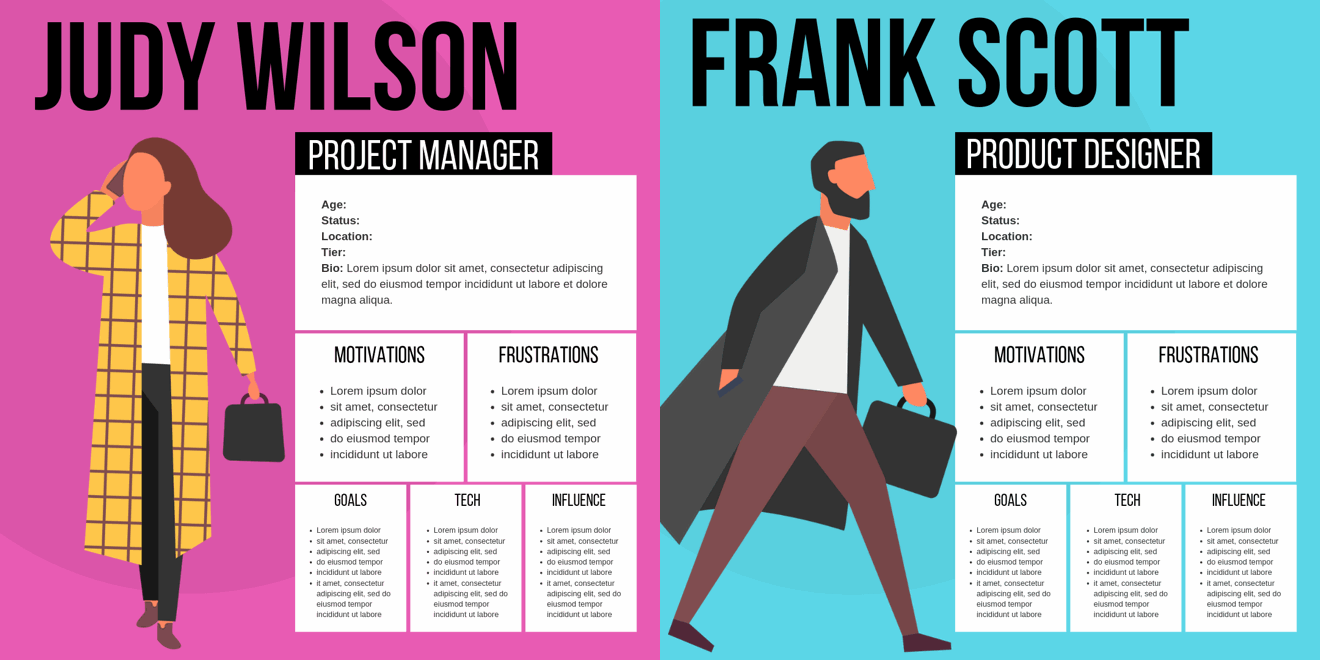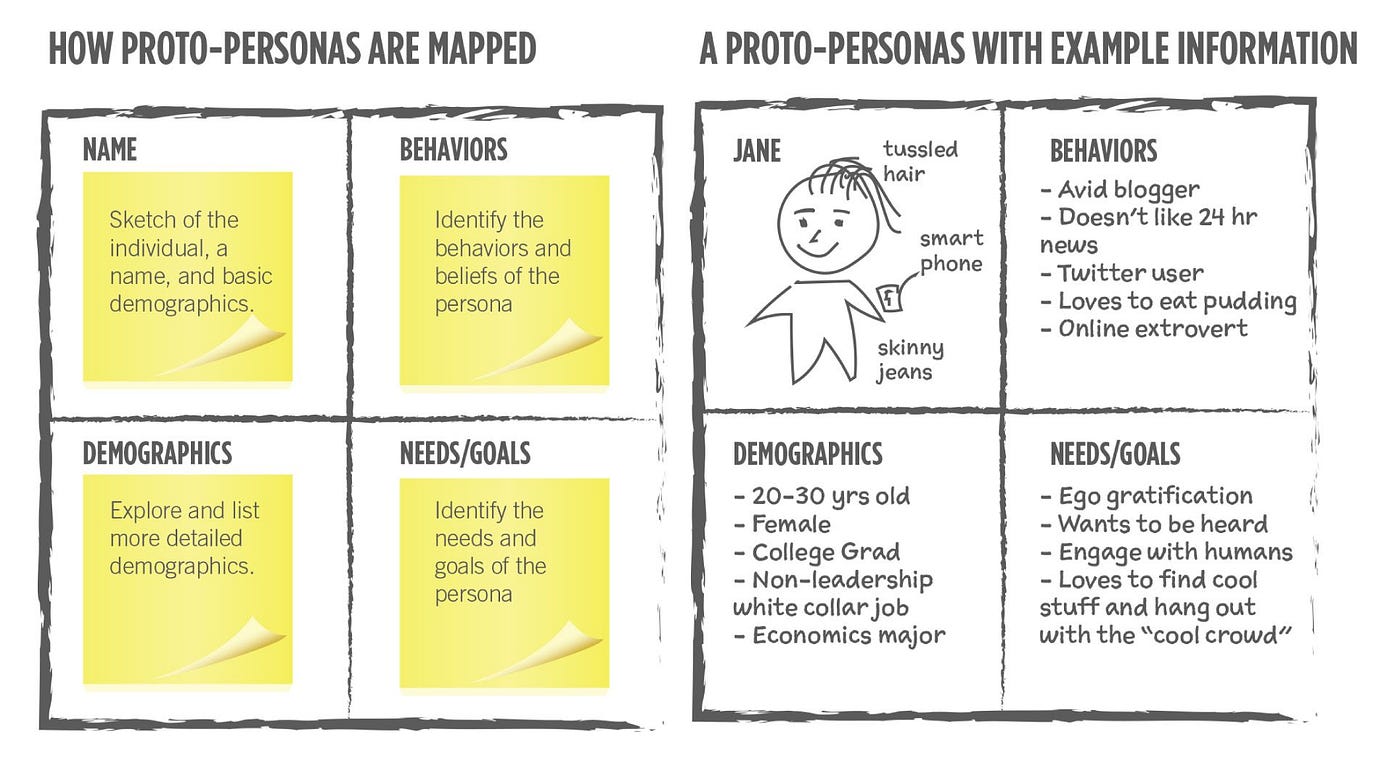User personas are these ideal characters created by any user-centered designers so that they understand what triggers these sets of individuals. It helps them understand ways in making the websites and integrated communications more effective. A user persona is one of the most significant design strategies to emerge from the user-centered design movement in computing from the mid-80s onwards. Designers create user personas in order to back up their decisions on designing. This helps in guiding themselves in the right direction so that they meet the user’s needs.
Broadly speaking, the nature and needs of humans as product users have not changed. People still want products they can understand, and which enable them to achieve their goals quickly, efficiently, without annoyance, and ideally with a little bit of enjoyment or humor thrown in.

“When you combine the Buyer Profile with Buying Insights, you will have clear guidance for the decisions you need to make to win their business” — Adele Revella.
In general, personas are divided into two types. One is what marketers use and the other type is the design personas. Marketing Personas consist of the set of people who have similar tastes, habits, family types mostly it’s about the demographics match. This describes the customers of the company. They have the same buying preferences, tastes, opinions.
Whereas design personas are the ones that reflect the product users, that have similar usage habits, product requirements, and goals. These usage habits can give the stats on how well the product functions and thus can help in the constant improvement of the app design.
In brief, a persona is a fictional user, ideally based on real user research as part of the design process. It is a composite sketch of the group we try to focus on while designing the product, website, etc., In fact, this process should not detail one person. Instead, it should reflect the majority of people who fall under the same sun. The character, skills, priorities, and goals of this persona are the main triggers to creating something at first.
How to create User Personas:
Creating user personas is a huge task and that is where the heart of the research process lies. Here, is the ideal process to create User Personas:
- Determine the method of research: There are a few types of research that are discussed below. Qualitative research methods like interviewing, participant observational studies, and surveys can help you gather information and build accurate personas. Through these methods, you can gather information and build User Personas.
- Finding Users: The design team can choose the users to decide who is going to be answering the product-related questions.
- Hypothesis Building: Based on the conclusions of each user, a hypothesis has to be formulated answering to why there are differences between them.
- User Patterns: Drawing user patterns based on previous research conclusions. The main question lies in if that conclusion represents the population.
- Persona Building: Now with the information at hand personas are built.
At f1studioz, we have designed User Personas for one of our clients in a way that they reflect the individuals we target.

Creating Fantastic User Personas: In general, there are three types of approaches to creating user personas.
- Proto Personas: These are the personas that are created with the help of the existing knowledge of the team. In general most of the time designers know the kind of personas the design is going to be focussed on. It’s an ad hoc process without performing primary research. The essence of the user persona is already there and this might be needing in-depth research to fill in the gaps.
So it basically works with a team putting together all the proto personas they think are relevant. Through brainstorming a few that have good fitting will be finalized. These personas are not backed with relevant research but with existing knowledge. So if there is any inaccurate assumption from the team, there is an inaccurate representation of the user personas.
2. Qualitative Personas: Personas that are backed with the statistics by running surveys, usability testing within a sample group of 25–30 people. User Personas created on the basis of these results are almost accurate. The sample size of the research and the results drawn from the qualitative persona approach might not really represent the whole population.
During this process, we look for broad user patterns. The information used, decisions made, usage behavior of most individuals should overlap with others. These patterns act as the foundation for building the user personas.
3. Statistical Perception: This is a mixed-method persona approach. It has both qualitative and quantitative approaches and at the same time is a long one. This method is too long and is too expensive. Also, this method is into heavy numbers and without a statistician or a data scientist, this method is tougher to be accomplished. On the other hand, it always holds accurate results.
This method is actually a continuous one to the qualitative method. Instead of looking for broad personas, we draw themes from the research. On the basis of these questions are framed and the survey is sent out.
Finally, creating UX personas is a long and thoughtful process — you can’t just type whatever comes into your mind and be done with this. Your UX personas should be based on real-life examples and cases — so, find time to conduct user interviews and do your research. All in all, spending time is an investment that has returns that will pay off with loyal users, for that enjoy using your software.
P.S: We have been working on the User Persona Repository.
Feel free to use it and let us know your thoughts!!










